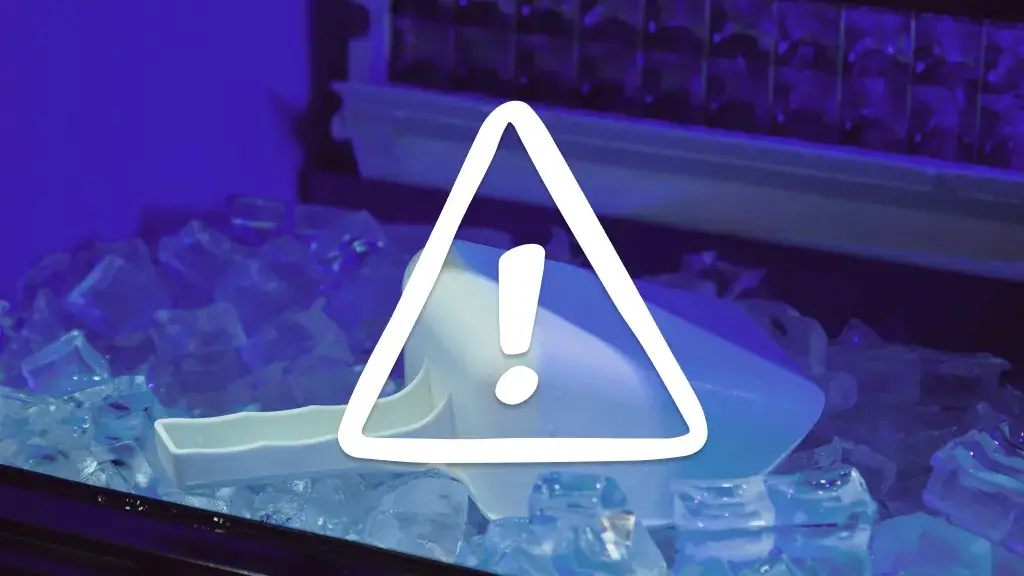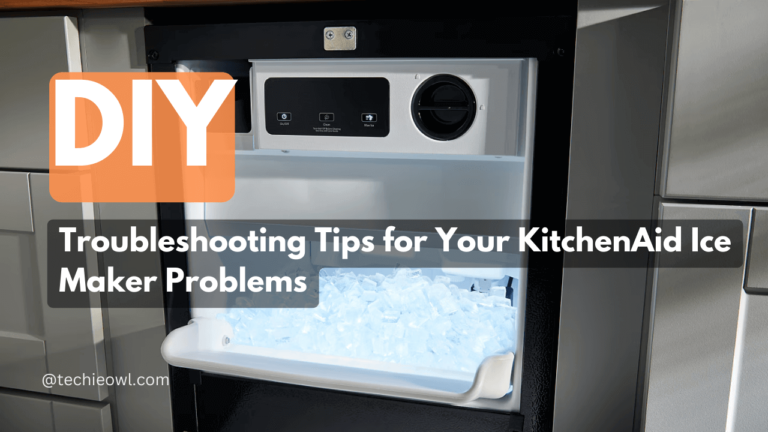Do you find yourself craving a cool beverage, only to realize that your KitchenAid ice maker isn’t working correctly? No need to panic, as you’re not alone in facing this problem. Many others who own kitchen appliances or enjoy do-it-yourself projects have also encountered these frustrations. Luckily, this guide contains all the necessary knowledge for troubleshooting and restoring your ice maker. We’ll discuss typical issues, practical solutions, and maintenance advice to keep your ice maker running smoothly. Let’s get started!
Table of Contents
Introduction to KitchenAid Ice Makers
Providing convenience and refreshing ice at all times, KitchenAid ice makers have become a staple in many households. With their robust performance and sleek designs, these appliances are popular among home owners and kitchen appliance enthusiasts alike. However, they may experience problems that impair their functioning, like any kitchen gadget.
It works by freezing water in a mold to create ice cubes, which are then dispensed into a bin for easy access. Knowing how the ice maker works can help prevent problems before they happen. In order to ensure optimal operation, these devices must be handled carefully because they are equipped with sensors and mechanical components.
We can help with low ice production, misshapen cubes, and more problems with your KitchenAid ice maker.
Problems with the KitchenAid Ice Maker

There is No Ice Production
You can be frustrated when your KitchenAid ice maker stops making ice. In order to diagnose and correct these problems, a systematic approach is required. These problems can be caused by a clogged water line, a malfunctioning water inlet valve, or an incorrect freezer temperature setting.
Ice Production is Slow
If your ice maker is producing ice, but at a slower rate than usual, that can be equally vexing. This can be caused by low water pressure or partially frozen water lines, which inhibit the ice-making process. You can restore your ice maker’s full capacity by identifying the root cause of the problem.
Ice Cubes that are too Small or Misshapen
Insufficient water flow or misalignment within the ice maker’s components can cause this issue. A small or misshapen ice cube can detract from your beverage experience, leaving you longing for perfectly shaped cubes. You must examine the water supply and internal mechanics if you wish to resolve this problem effectively.
Leaks of Water
A water leak is another common problem that can result in messes and damage. Leaks can be caused by damaged water lines, faulty seals, or improper installation. It is vital to identify the source of the leak so that further complications can be avoided and your kitchen remains dry and tidy.
DIY Guide: Troubleshooting Tips for Your Fisher & Paykel Washing Machine
KitchenAid Ice Maker Troubleshooting
1. It is important to check the power and water supply
Before troubleshooting your ice maker, you must ensure that it receives enough power and water. Ensure that the appliance is plugged in and that the circuit breaker has not tripped. Next, ensure the water line is free of kinks and blockages. In order to function properly, your ice maker needs a steady supply of electricity and water.
2. The ice maker’s components should be checked
Inspect the motor, thermostat, and water inlet valve of your ice maker carefully. You can use this inspection to identify underlying issues that may be affecting your ice maker’s performance. Make sure all connections are secure and functioning properly. Look for visible damage or wear that might hamper performance.
3. Keep your ice maker clean and maintained
The best way to prevent problems before they escalate is to keep your ice maker clean, free of mineral buildup or debris. Clean the interior and exterior surfaces of all components with mild detergent and water to ensure they are free of contaminants.
Solutions Tailored to Specific Issues
There is Little or No Ice Production
When your ice maker does not produce ice, check the water inlet valve first. The valve controls the flow of water into the ice maker, so a malfunction can disrupt the entire process. Consider replacing the valve if it is faulty or damaged. Also, make sure the freezer temperature is set correctly for ice production.
Small or Misshapen Ice Cubes
Check the water line for obstructions and adjust the water pressure to the recommended level. This will improve water flow and create more uniform ice cubes.
Leakage of Water
A thorough inspection of all connections and seals within the ice maker can also help prevent leaks. To prevent further leaks, replace worn or faulty parts, such as hoses or gaskets, and install the ice maker correctly, as an incorrectly positioned ice maker will cause water to seep out.
Tips for Maintaining your KitchenAid Ice Maker
It is important to maintain your ice maker on a regular basis. Here are some tips:
1. Clean the Ice Maker regularly to prevent mineral buildup. Use a gentle cleaner and follow the manufacturer’s instructions.
2. Make sure the water supply meets the recommended pressure levels. Address any issues immediately to avoid disruptions.
3. Replace any faulty components of the ice maker to ensure efficient operation. Check the ice maker’s components periodically for signs of wear or damage.
FAQs and Troubleshooting for KitchenAid Ice Makers
Q. What should I do if my ice maker doesn’t make ice?
A faulty water inlet valve, low water pressure, or an incorrect freezer temperature can cause this problem.
Q. Can you tell me how to clean my KitchenAid ice maker?
Use mild detergent and water to clean the interior and exterior surfaces of the ice maker.
Q. What should I do if my ice cubes are too small?
By adjusting the water pressure and checking the water line for clogs, you can make larger, more uniform ice cubes.
Q. When to Call a Professional for Ice Maker Troubles?
If your ice maker is still malfunctioning after exhausting all troubleshooting options, consult a technician. Some problems can be resolved by DIY troubleshooting, while others might require professional assistance. It is possible for them to diagnose complex problems and repair your ice maker so that it works properly.
As a Conclusion
It doesn’t have to be difficult to keep your KitchenAid ice maker running smoothly. By understanding common problems and implementing the solutions outlined in this guide, you’ll be able to maintain your appliance and enjoy ice-cold drinks for years to come. Regular maintenance and proactive care will prevent future problems with your KitchenAid ice maker.
Consider exploring new options if your ice maker is beyond repair. Popular alternatives to KitchenAid include the GE Profile Opal Nugget Ice Maker, the Frigidaire EFIC108, and the Igloo ICEB26SS. Choosing these models is a good idea because they will deliver excellent performance and reliability.
We strive to provide you with the knowledge and insight you need to make informed decisions about your home appliances. Stay tuned to our blog for more tips and advice.

